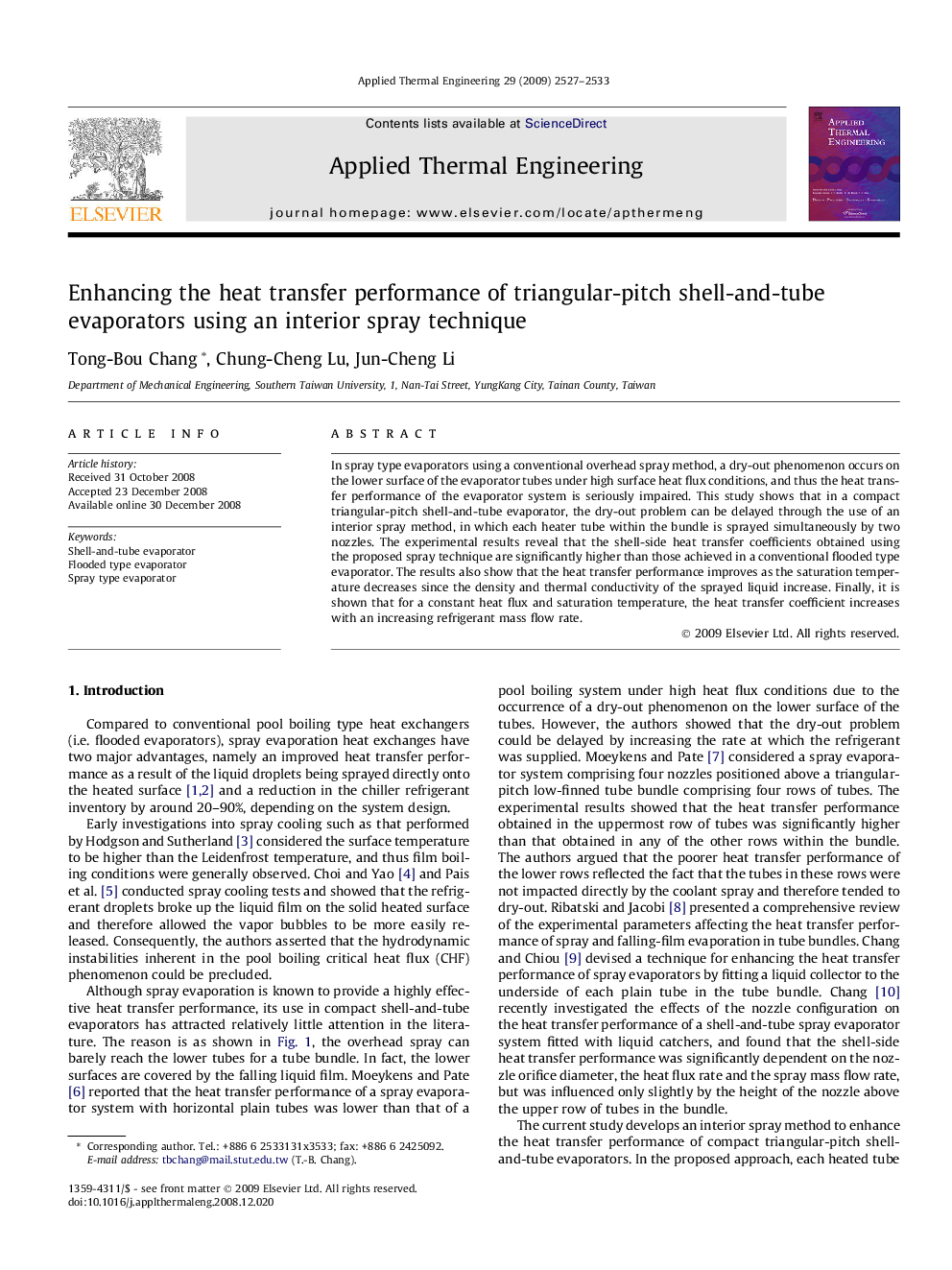| Article ID | Journal | Published Year | Pages | File Type |
|---|---|---|---|---|
| 648575 | Applied Thermal Engineering | 2009 | 7 Pages |
In spray type evaporators using a conventional overhead spray method, a dry-out phenomenon occurs on the lower surface of the evaporator tubes under high surface heat flux conditions, and thus the heat transfer performance of the evaporator system is seriously impaired. This study shows that in a compact triangular-pitch shell-and-tube evaporator, the dry-out problem can be delayed through the use of an interior spray method, in which each heater tube within the bundle is sprayed simultaneously by two nozzles. The experimental results reveal that the shell-side heat transfer coefficients obtained using the proposed spray technique are significantly higher than those achieved in a conventional flooded type evaporator. The results also show that the heat transfer performance improves as the saturation temperature decreases since the density and thermal conductivity of the sprayed liquid increase. Finally, it is shown that for a constant heat flux and saturation temperature, the heat transfer coefficient increases with an increasing refrigerant mass flow rate.
